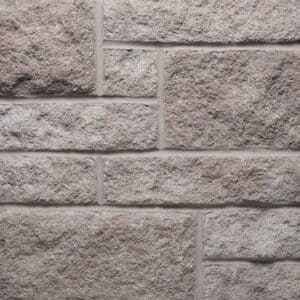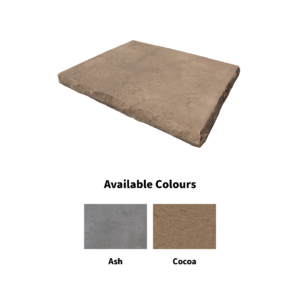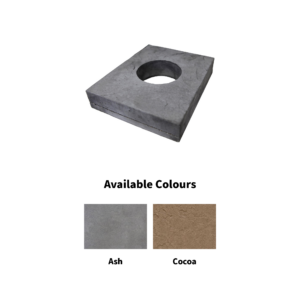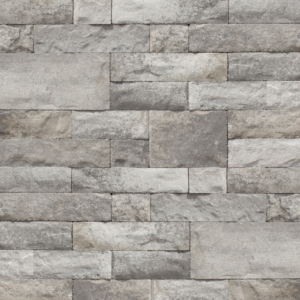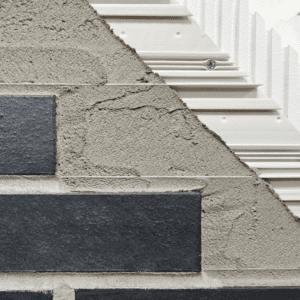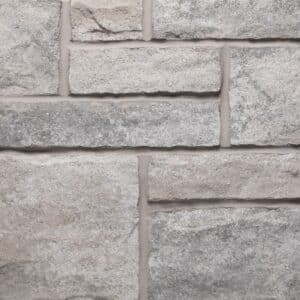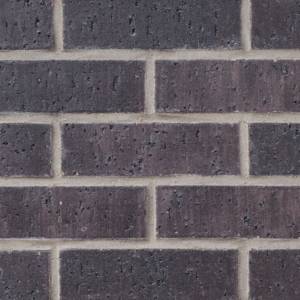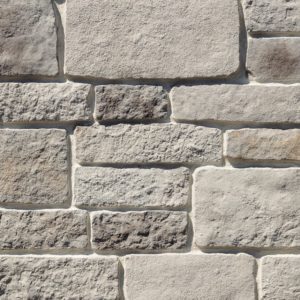Filter By:
Cladding
Exterior Cladding in Modern Architecture
Cladding is an essential component in modern construction, serving both protective and aesthetic purposes on building exteriors. This versatile element enhances weather resistance, thermal insulation, and visual appeal, making it indispensable for architects, builders, and property owners alike. From traditional materials like wood and brick to contemporary options such as metal and composite panels, cladding systems are available in various forms to suit different architectural styles and functional needs.
Read More
Role of Cladding in Architecture
Serving as a protective outer layer, cladding shields buildings from environmental elements while enhancing their visual appeal. It plays a crucial role in improving energy efficiency by providing additional insulation and can significantly impact a structure’s overall performance. Modern cladding systems often incorporate innovative materials and designs, allowing architects to create striking facades that reflect contemporary architectural trends. Beyond its functional aspects, cladding contributes to the character and identity of buildings, influencing how they integrate with their surroundings and making a statement about their purpose and design philosophy.
Types of Exterior Wall Cladding
There are numerous types of exterior wall cladding available, each with its own unique characteristics and benefits. Some popular options include:
Vinyl Siding
Vinyl siding is a popular choice for residential projects due to its affordability, durability, and low maintenance requirements. It comes in a wide range of colours and styles, making it versatile for various architectural designs. Vinyl siding is resistant to moisture and insects, which contributes to its longevity. However, it can become brittle in extremely cold temperatures and may fade over time with prolonged sun exposure.
Metal Cladding
Metal cladding, including aluminum and steel, offers excellent durability and fire resistance. It’s often used in modern architectural designs and can be formed into various shapes and profiles. Metal cladding is lightweight and can be recycled, making it an environmentally friendly option. It is resistant to mold and pests but can be prone to denting and corrosion if not properly coated or maintained.
Fiber Cement
Fiber cement cladding is a durable and fire-resistant option that combines the strength of cement with the flexibility of fiber reinforcement. It can mimic the appearance of wood or stone while offering superior weather resistance. Fiber cement is known for its durability and resistance to harsh weather conditions, making it a preferred choice in areas prone to extreme weather. It requires painting and sealing to maintain its appearance and prevent moisture infiltration.
Stone Veneer
Stone veneer provides a classic and timeless appearance to buildings. They can be made from natural stone or manufactured materials, offering excellent durability and thermal mass, which contributes to energy efficiency. Natural stone veneer is known for their strength and weather resistance, while manufactured stone veneer offers a lighter and more cost-effective alternative. Both options require proper sealing to prevent moisture penetration.
Brick Veneer
Brick veneer offers a traditional and sturdy appearance, providing good insulation and fire resistance. Like stone veneer, they can be natural or manufactured, enhancing the aesthetic appeal of buildings. Brick veneer are durable and low-maintenance, making them a popular choice for both residential and commercial properties. They provide excellent thermal mass, helping to regulate indoor temperatures.
Wood Cladding
Wood cladding provides a natural and warm aesthetic to buildings. It can be used in various forms, such as shingles, shakes, or boards. While beautiful, wood cladding requires regular maintenance to protect against moisture and pests. Different types of wood, such as cedar and redwood, offer varying degrees of natural resistance to decay and insects. However, wood cladding is susceptible to warping and rotting if not properly maintained.
Composite Materials
Composite cladding combines different materials to create a product with enhanced properties. These materials often offer the benefits of natural materials with improved durability and lower maintenance requirements. Composite cladding can mimic the appearance of wood, stone, or metal while providing resistance to moisture, insects, and UV radiation. It is available in a variety of colours and textures, offering design flexibility.
Each type of cladding has its own set of pros and cons in terms of cost, durability, maintenance requirements, and aesthetic appeal. The choice of cladding material should consider factors such as local climate, building regulations, architectural style, and budget. It’s also important to ensure proper installation to maximize the performance and longevity of the chosen cladding material.
Benefits of Exterior Cladding
Exterior cladding offers numerous benefits that make it an essential component of modern building design and construction:
Weather Protection
Cladding acts as a protective barrier against harsh weather conditions, shielding the building’s structure from rain, snow, wind, and UV radiation. This protection helps prevent water infiltration and reduces the risk of structural damage over time.
Thermal Insulation
Many cladding materials provide additional insulation, improving the building’s energy efficiency. This can lead to reduced heating and cooling costs, making the building more environmentally friendly and economical to operate.
Acoustic Insulation
Certain types of cladding, particularly those with multiple layers or air gaps, can help reduce noise transmission from the outside, creating a more comfortable interior environment.
Aesthetic Enhancement
Cladding significantly impacts a building’s visual appeal, allowing architects and designers to create unique and attractive facades. The wide variety of materials, colours, and textures available enables customization to suit different architectural styles and preferences.
Low Maintenance
Many modern cladding materials are designed to be low maintenance, requiring minimal upkeep to retain their appearance and functionality. This can result in long-term cost savings for building owners.
Increased Property Value
A well-designed and properly installed cladding system can enhance a building’s curb appeal and potentially increase its market value.
Fire Resistance
Some cladding materials, such as brick and certain types of metal cladding, offer improved fire resistance, contributing to the overall safety of the building.
Moisture Management
Properly designed cladding systems include features for moisture management, such as drainage planes and ventilation, which help prevent issues like mold growth and structural decay.
Concealment of Structural Elements
Cladding can effectively hide unsightly structural elements or outdated facades, allowing for a complete transformation of a building’s exterior without extensive reconstruction.
Versatility
The wide range of cladding options allows for versatility in design, enabling architects to create buildings that stand out or blend in with their surroundings as desired.
Extended Building Lifespan
By protecting the underlying structure from environmental stressors, cladding can significantly extend the lifespan of a building, reducing the need for major repairs or renovations.
Sustainability
Some cladding materials, such as recycled metal or sustainably sourced wood, can contribute to a building’s environmental credentials, which is increasingly important in modern construction.
These benefits collectively demonstrate why cladding is a crucial consideration in both new construction and renovation projects, offering a combination of practical advantages and design flexibility that can significantly enhance a building’s performance and appeal.
Factors to Consider When Choosing Exterior Cladding
Selecting the right exterior cladding for a building involves considering several factors:
Climate and Weather Conditions
The local climate plays a crucial role in determining the most suitable cladding material. Areas with high rainfall or humidity may require materials with excellent moisture resistance, while regions with extreme temperature fluctuations need cladding that can withstand thermal expansion and contraction.
Building Design and Architecture
The architectural style of the building should influence the choice of cladding. Modern designs may benefit from sleek metal or composite panels, while traditional structures might be better suited to brick or stone veneer.
Building Codes and Regulations
Ensure that the chosen cladding material complies with local building codes and regulations, particularly regarding fire safety, wind resistance, and energy efficiency
Maintenance Requirements
Consider the long-term maintenance needs of different cladding materials. Some options, like vinyl siding, require minimal upkeep, while others, such as wood cladding, may need regular painting or sealing.
Energy Efficiency
The insulation properties of cladding materials can significantly impact a building’s energy efficiency. Materials with high R-values can help reduce heating and cooling costs.
Fire Resistance
In areas prone to wildfires or where building codes require specific fire ratings, choosing fire-resistant cladding materials is crucial for safety and compliance.
Cost
The initial cost of materials and installation, as well as long-term maintenance expenses, should be factored into the decision-making process.
Exterior Cladding Installation Tips
When installing exterior cladding, following proper techniques is crucial for ensuring durability, weather resistance, and aesthetic appeal. Here are some key tips to consider:
- Prepare the Surface: Ensure the wall is clean, dry, and structurally sound, and apply a weather-resistant barrier.
- Installation Sequence: Start from the bottom and work upward, regularly checking alignment with a level.
- Allow for Movement: Leave small gaps between panels for thermal expansion, and seal edges to prevent moisture infiltration.
- Choose the Right Materials: Use fasteners and tools compatible with your cladding material, and ensure proper ventilation behind the cladding.
- Follow Guidelines: Adhere to manufacturer instructions and consider professional installation for complex projects.
Innovations in Exterior Wall Cladding
The field of exterior wall cladding continues to evolve with new technologies and materials:
Smart Cladding
Innovative cladding systems incorporate sensors and responsive elements to adapt to environmental conditions, improving energy efficiency and occupant comfort. These systems can adjust their properties, such as reflectivity or insulation, in response to temperature changes.
Self-Cleaning Surfaces
Some advanced cladding materials feature self-cleaning properties, using photocatalytic processes to break down dirt and pollutants when exposed to sunlight. This reduces maintenance requirements and helps maintain the cladding’s appearance.
Biomimetic Designs
Some cladding systems are inspired by natural forms and processes, using these ideas to enhance building performance. These designs can improve factors like airflow and thermal regulation, contributing to a more efficient and comfortable building environment.
3D Printed Cladding
Advancements in 3D printing technology are enabling the creation of complex and customized cladding designs with reduced waste and improved efficiency. This allows for greater design flexibility and the ability to produce unique architectural features.
Recycled and Upcycled Materials
Innovative cladding materials are being crafted from recycled or upcycled sources, like plastic waste and reclaimed wood. These materials support circular economy principles by reducing waste in construction and offering sustainable, eco-friendly options for building projects.
Breathable Membranes
Advanced breathable membranes are being added to cladding systems to better manage moisture and enhance indoor air quality. These membranes help keep buildings energy efficient while protecting against issues like mold and rot by allowing moisture to escape.
Acoustic Cladding
Specialized cladding materials are designed to improve sound insulation, which is especially useful in noisy urban areas or near high-traffic zones. Acoustic cladding helps reduce external noise, making indoor spaces quieter and more comfortable.
Living Walls
Green or living wall systems are being incorporated into cladding designs, improving air quality and providing natural insulation. These walls also enhance biodiversity, adding greenery and natural habitats to urban environments.
These innovations are not only enhancing the aesthetic possibilities of building facades but also significantly improving performance in terms of energy efficiency, sustainability, and functionality. As technology continues to advance, we can expect even more groundbreaking developments in exterior wall cladding, further transforming the way we design and construct buildings.
Exterior cladding is a vital component of modern architecture, blending functionality and aesthetics to enhance buildings by providing essential weather protection, improving energy efficiency, and dramatically transforming a structure’s appearance. As advancements in cladding technology continue to push the boundaries of what’s possible in building design—integrating features like renewable energy generation and dynamic environmental responses—the choice of material and system should be carefully considered, weighing factors such as durability, maintenance, cost, and environmental impact to ensure the best long-term solution for each unique project. If you’re considering brick, stone, or siding, I-XL offers a wide selection of high-quality materials to suit any architectural vision. Contact us today to find the perfect solution for your project.
Frequently Asked Questions (FAQs) About Wall Cladding
What is the primary purpose of exterior cladding?
The primary purpose of exterior cladding is to protect the building’s structure from environmental elements such as rain, wind, and sunlight, while also providing thermal insulation, noise reduction, and aesthetic enhancement.
How do I choose the right wall cladding material for my building?
Choosing the right wall cladding material involves considering factors such as climate, building design, maintenance requirements, energy efficiency, fire resistance, and cost. It’s important to select a material that suits the specific needs and conditions of your building.
What are the most durable exterior cladding materials?
Metal cladding, fiber cement, and stone or brick veneers are among the most durable cladding materials. They offer excellent resistance to weathering, fire, and pests, making them suitable for long-term use.
Can cladding improve a building’s energy efficiency?
Yes, many cladding materials provide additional insulation, which can improve a building’s energy efficiency by reducing heating and cooling costs. Materials with high R-values are particularly effective in enhancing thermal performance.
Is cladding environmentally friendly?
The environmental impact of cladding depends on the materials used. Options with recycled content, high recyclability, low embodied energy, and good insulation properties are generally more environmentally friendly. It’s important to consider the sustainability of the entire lifecycle of the cladding material.
Does exterior cladding require much maintenance?
Maintenance requirements vary by material. Some options like vinyl and fiber cement are very low maintenance, needing only occasional cleaning. Others like wood may require more regular upkeep including painting or staining.
Read Less



